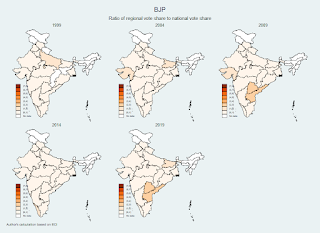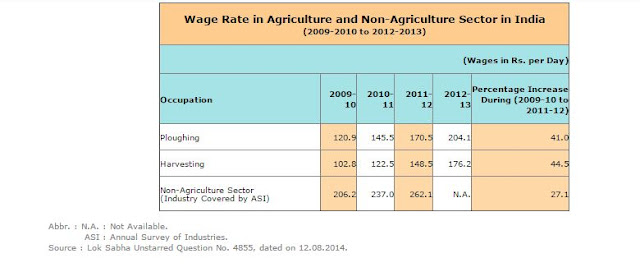Congress's Dilemma: Weak at National issues and Confused about Regional issues
Congress has been a strong party at the regional as well as national level. But the drastic decline of the Congress party in regional as well as the national sphere is reflecting few phenomenons. We can divide Congress's life into five major major periods: 1947-1967, 1967-1989, 1989-2004, 2004-2014, 2019-2022. Initially, Congress was the only party ruling across regions. Post-1967 what happens is Congress facing challenges from other parties. Our electoral system (First-Past-The-Post (FPTP)) tends to have a two-party system at the center (This law is known as Duverger’s law). While we do have a multiparty system, it depends on federalism and the concentration of power at the center. Under weak federalism and a higher concentration of power at the center, the FPTP system can have a two-party system at the center as well as at the state. Otherwise, FPTP can lead to a multiparty system. Now with this law, let's track what is happening with Congress. In the period 1967-1989, even though there was a rise of a two-party system, multiparty system, and regional parties, Congress was a big brother at the center as well as the state. Post-1989, Congress was weak at the center i.e. less power is concentrated at the center. With that 73rd amendment (Panchayat Raj) tried to build federalism by improving the state-center relationship. Therefore, the multiparty system started growing at state as well as center. Regional parties also started developing themselves. But still, it was not anti-Congress for three reasons.
1) The decline in Congress at the Center couldn't be filled by 'other national parties'.
2) At the regional level although state parties were growing, these parties are viewed as parties under "Congress Umbrella". Therefore Congress wasn't not replaced by these regional parties at most of the places.
3) Congress does have some regional leadership be it Maharashtra, be it Rajasthan, be it Madhya Pradesh, be it Uttarakhand. That helps Congress to sustain.
Therefore till 2014, Congress survived. And now exactly the opposite is happening.
Post-2014, the power started getting concentrated at the center and federalism is becoming weak considering eco-political co-operation between center and state. This creates the atmosphere for the two-party system. And Congress couldn't find a place in this newly generated two-party system mainly because of three reasons (which are exactly opposite to the above reasons).
1) The decline in Congress at Center is filled by BJP
2) At the regional level, regional parties started identifying themselves as "different parties" which doesn't fall under "Congress Umbrella". That replaces Congress at the regional level.
3) Congress lost regional leadership.
Observe the following maps
Map 1: BJP







टिप्पण्या
टिप्पणी पोस्ट करा